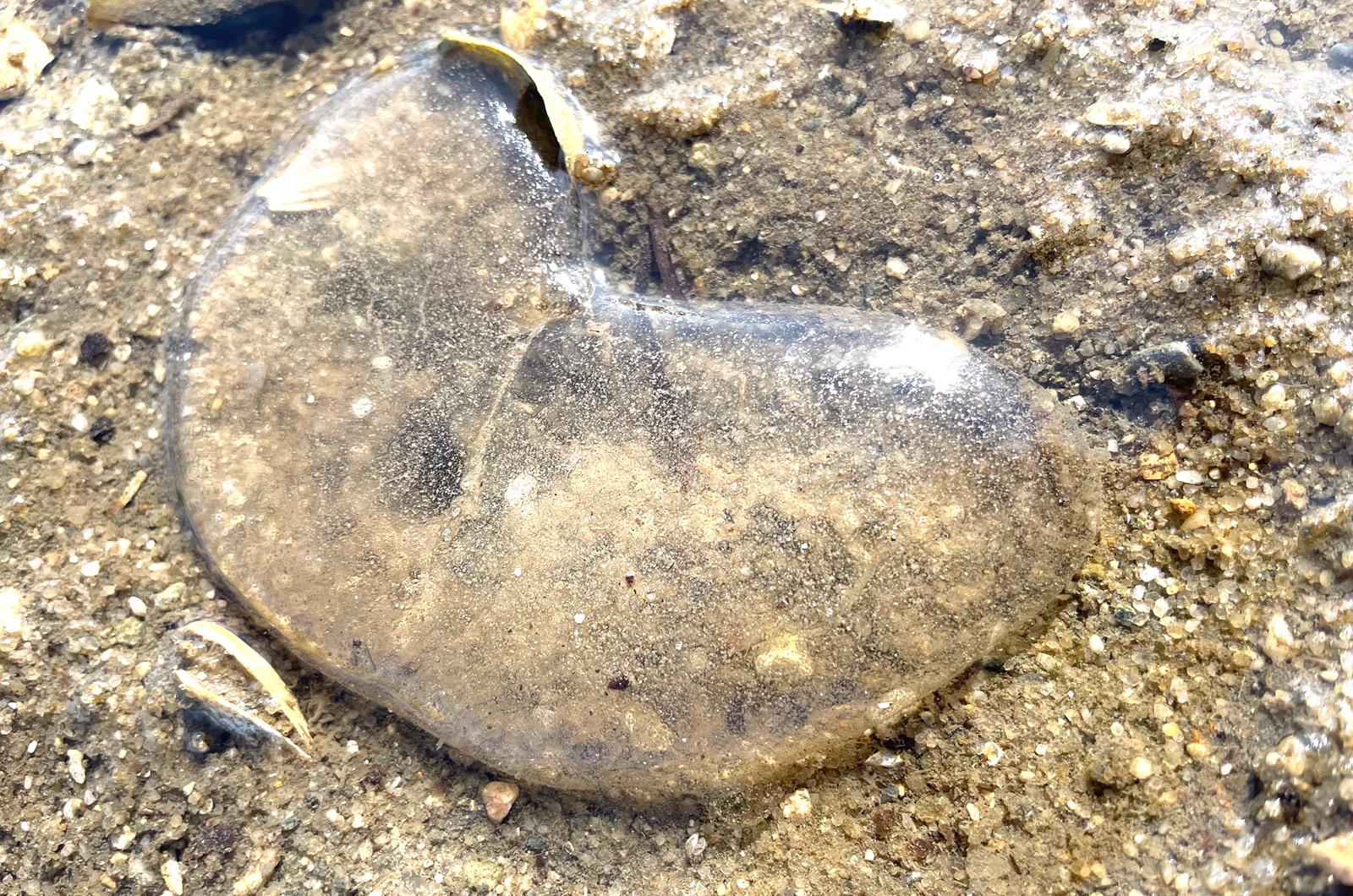“Hello, nature curious journalists” is how the email began, so I knew a natural history mystery was coming my way.
It was from Nancy Weaver, writing with a question about a gelatinous blob that she and Janet Woodcock found on the beach at Shear Pen Pond on Chappaquiddick. Describing it as jellyfish-ish but lacking tentacles was enough for me to put forth an initial identification. Nancy’s photos cinched it.
Lugworm egg sacs — also amusingly called sea snot and beach boogers — provide an immediate image of these jellyrolls. The science and the sex lives that precluded them, like the substance’s creator, goes deep.
Start with a worm, an annelid or segmented worm to be specific. Lugworms are a three-to-four-inch wigglers with 17 body segments. They spend their lives in a U-shaped burrow beneath the sand and mud in the tidal and intertidal zone. On the surface of one side of the burrow is a pile of their poop, or castings that emerge from the tail end of the creature. On the other side, where their subsurface mouth is, find a pooled depression or puddle. This depression is called a feeding pit and is formed as the worms suck in nutrients from the surface.
Worm numbers are staggering: one estimate suggests that they compose one-third of the biomass on an average beach. Densities of up to 1,000 individuals per square meter have been recorded, though 100 or so is more likely. And while they don’t move, they provide important ecosystem services as bioturbators, oxygenating their soil and breaking down organic matter.
In their sessile and solitary state, these worms must get creative to procreate. Lugworm love happens indepen dently, with separate-sexed squirmers never meeting in person — or wormson.
Male lugworms release sperm at low tide where it pools in puddles in the mud around their burrows. When the tide comes it, it flushes the sperm into the burrow of the female, where she will take it and make those tongue-shaped bags of babies that remain attached to the burrow and emerge out onto the surface. Sometimes these jelly bags, which can be eight inches long, also break off and can be found floating.
Some years ago, across the Atlantic in the United Kingdom, citizens scientists were engaged to participate in studying this phenomenon. Dubbed Spermwatch — I am not making this up — beachgoers were asked to walk the beaches and look for sperm puddles and coiled waste piles to determine timing and density of the reproducing lugworms.
If segmented worm sex isn’t of interest, another fascinating feature of these annelids is their blood. Turns out that it is similar enough to humans to be of interest medicinally. Researchers have found that lugworm hemoglobin can transport 40 times more oxygen to its tissues than human hemoglobin. Studies in France are hoping to determine if this blood could be used in transplants or for septic shock patients.
The research on the wonderful world of these worms is truly food for thought and leaves me with more questions. One curiosity that I am not interested in exploring came from the last exchange with Nancy when she wondered if those gelatinous egg sacs were tasty. Since I can’t bring myself to even eat Jell-O, I will leave the tasting to Nancy and the birds and creatures that consume those protein-rich packets of goo.
Suzan Bellincampi is Islands director for Felix Neck Wildlife Sanctuary in Edgartown and the Nantucket Wildlife Sanctuaries. She is also the author of Martha’s Vineyard: A Field Guide to Island Nature and The Nature of Martha’s Vineyard.




Comments
Comment policy »